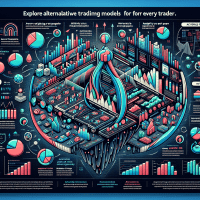Free/Sponsored Challenges: Alternatives to Prop Firm Fees
Prop trading professionals and enthusiasts now have innovative alternatives to traditional evaluation fees. Instead of paying to prove your skills, free and sponsored challenges offer an attractive pathway to access capital with minimal upfront costs. This detailed guide dives into advanced prop trading strategies, in-depth comparisons of cutting-edge backtesting tools, and actionable insights that empower traders at every level.
Understanding Free and Sponsored Prop Trading Challenges
Prop firms are increasingly turning to free or sponsored trading challenges as a competitive alternative to costly evaluation programs. These new models allow traders to showcase their strategies, manage risks effectively, and secure funding without heavy initial fees. This section explains what these challenges entail, their mechanism, and why they are becoming popular among both retail and institutional prop traders.
Key Benefits of Alternative Challenges
- No Upfront Fees: Eliminate evaluation costs and reduce financial risk.
- Sponsored Capital: Access capital directly, with some firms offering instant funding options.
- Enhanced Flexibility: Trade with fewer restrictions and more flexible rules compared to traditional programs.
- Rapid Entry: Faster participation in funding programs accelerates the path to profitability.

Figure 1: Screenshot of a prop trading challenge interface demonstrating real-time performance metrics.
Advanced Backtesting in Prop Trading: Tools & Strategies
Successful prop trading strategies require rigorous backtesting and validation. Prop trading challenges often incorporate high standards for risk management as measured by metrics such as Sharpe ratios, maximum drawdown, and profit factor. Below, we compare some of the most prominent automated backtesting tools that have gained popularity in the prop trading community.
Tool Comparison: Advanced Backtesting Platforms
| Tool | Backtesting Features | Data Quality & Sources | Integration & Automation | Pricing & Use Cases |
|---|---|---|---|---|
| TradingView | Vectorized backtesting, comprehensive indicators | High-quality historical data across asset classes | API access, broker integration, strong community support | Free basic tier; suited for both retail and prop firms |
| MetaTrader 5 | Event-driven models, commission/slippage handling | Deep forex and CFD data, live feeds | Extensive API, plugin compatibility | Free demo; ideal for forex prop trading |
| NinjaTrader | Automated strategy testing with stress testing | Rich historical data and tick feeds | Broker integrations, customizable analytics | License required; premium features for institutional use |
| Backtrader | Open-source, automated parameter optimization | Supports custom data feeds, reliable historical sets | Python API for integration with analytical tools | Free; popular amongst quant developers |
This table provides a snapshot of the tools used in advanced backtesting, revealing their strengths in handling event-driven testing, data integrity, and integration capabilities. Understanding these nuances helps prop trading firms select the most efficient tool for both simulation and real-market conditions.
Expert Guidance: Advanced Backtesting Concepts for Prop Trading
Deep-dive into the advanced strategies and pitfalls of backtesting, emphasizing not only the mechanics but also how to generate predictive insights for live trading. Here are critical areas covered:
Mitigating Common Backtesting Pitfalls
When conducting backtests, traders often fall prey to challenges such as overfitting, survivorship bias, look-ahead bias, and data snooping. To mitigate these risks:
- Overfitting: Use cross-validation techniques and monitor the Sharpe ratio against randomly generated strategies.
- Survivorship Bias: Incorporate a broad dataset that includes delisted or inactive assets.
- Look-Ahead Bias: Always reserve out-of-sample data for final testing before live deployment.
- Data Snooping: Test strategies on a variety of market conditions and diversify the datasets.
Walk-Forward Optimization vs. Traditional Backtesting
Walk-forward optimization is an essential techniques for dynamic markets. Unlike static backtesting, walk-forward analysis re-optimizes parameters periodically to adjust to changing market conditions. This approach replicates real-time decision-making as seen in:
- Dynamic recalibration of models
- Regular evaluation of key metrics such as maximum drawdown and profit factor
- Enhanced resilience against market regime shifts
Integrating Backtesting with Forward Testing
For a comprehensive strategy validation, integrate backtesting with forward testing. Paper trading in a live market environment tunes the theoretical model against actual performance. Key metrics to monitor include:
- Realized vs. backtested Sharpe ratios
- Consistency in drawdown levels
- Strategy response to real market volatility
Code Snippet: Automating Parameter Optimization
Below is an example of Python code using Backtrader to automate the parameter optimization process:
import backtrader as bt
class MyStrategy(bt.Strategy):
params = (('period', 20), )
def __init__(self):
self.sma = bt.indicators.SimpleMovingAverage(self.data.close, period=self.p.period)
def next(self):
if self.data.close[0] > self.sma[0] and not self.position:
self.buy()
elif self.data.close[0] < self.sma[0] and self.position:
self.sell()
cerebro = bt.Cerebro()
# Add data feed, strategy, and optimize
cerebro.addstrategy(MyStrategy, period=range(10, 31))
results = cerebro.run()
As of October 2023, such automated processes are essential for maintaining competitive edges in fast-paced markets.
Real-World Prop Trading Case Studies
Many established prop trading firms have successfully integrated free and sponsored challenges to onboard new trading talent while refining their algorithms. One case involved a boutique prop firm testing a volatility breakout strategy. Key observations included:
- Challenge: High sensitivity to overfitting when small sample sizes were used.
- Solution: Incorporation of walk-forward optimization and out-of-sample testing, leading to a Sharpe ratio improvement from 1.2 to 1.7.
- Result: A reduction in maximum drawdown by 15% and faster iteration times on strategy adjustments.
These case studies underscore the practical benefits of advanced backtesting integrated with real challenge frameworks, bridging the gap between research and live trading performance.

Figure 2: Example backtesting report highlighting key metrics like drawdown and Sharpe ratio improvements.
Regulatory Considerations and Compliance in Prop Trading
Prop trading firms are subject to rigorous regulatory frameworks such as MiFID II, ESMA, and NFA rules. Staying compliant means:
- Ensuring transparent reporting methodologies
- Implementing robust risk management systems
- Regular audits and stress testing of trading strategies
For instance, free evaluation challenges must adhere to strict disclosure standards and audit trails to uphold market integrity and trader accountability.
Tailored Advice for Prop Trading Roles
Different roles within a prop trading firm have distinct needs:
- Junior Traders: Focus on mastering fundamental chart analysis, risk management basics, and effective use of automation tools like TradingView and MetaTrader 5.
- Senior Quants: Emphasize advanced model validation techniques, intricate backtesting scenarios, and integrating algorithmic signals with real-time analytics.
- Risk Managers: Prioritize comprehensive stress testing, scenario analyses, and proper documentation to meet regulatory compliance.
For more detailed strategies and tools, explore our Comprehensive Guide to Prop Trading Strategies and refer to our Risk Management Checklist for Prop Firms.
Closing Thoughts and Next Steps
This comprehensive guide not only provides insights into eliminating prop firm evaluation fees through free and sponsored challenges, but also equips traders with advanced backtesting strategies essential for maximizing trading performance. By combining rigorous testing, real-world case studies, and the latest regulatory insights, traders can position themselves at the cutting edge of prop trading technology.
Pro Tip: Review your backtesting results regularly, and always validate your strategies with out-of-sample testing before live deployment. Continuous improvement and adherence to regulatory standards will keep your trading edge sharp.
For further insights, download our detailed Risk Management Checklist, which covers essential parameters, trading journal templates, and compliance guidelines for prop firms.
Stay tuned for our upcoming webinar on integrating automated backtesting with live trading systems to further empower your trading journey.







